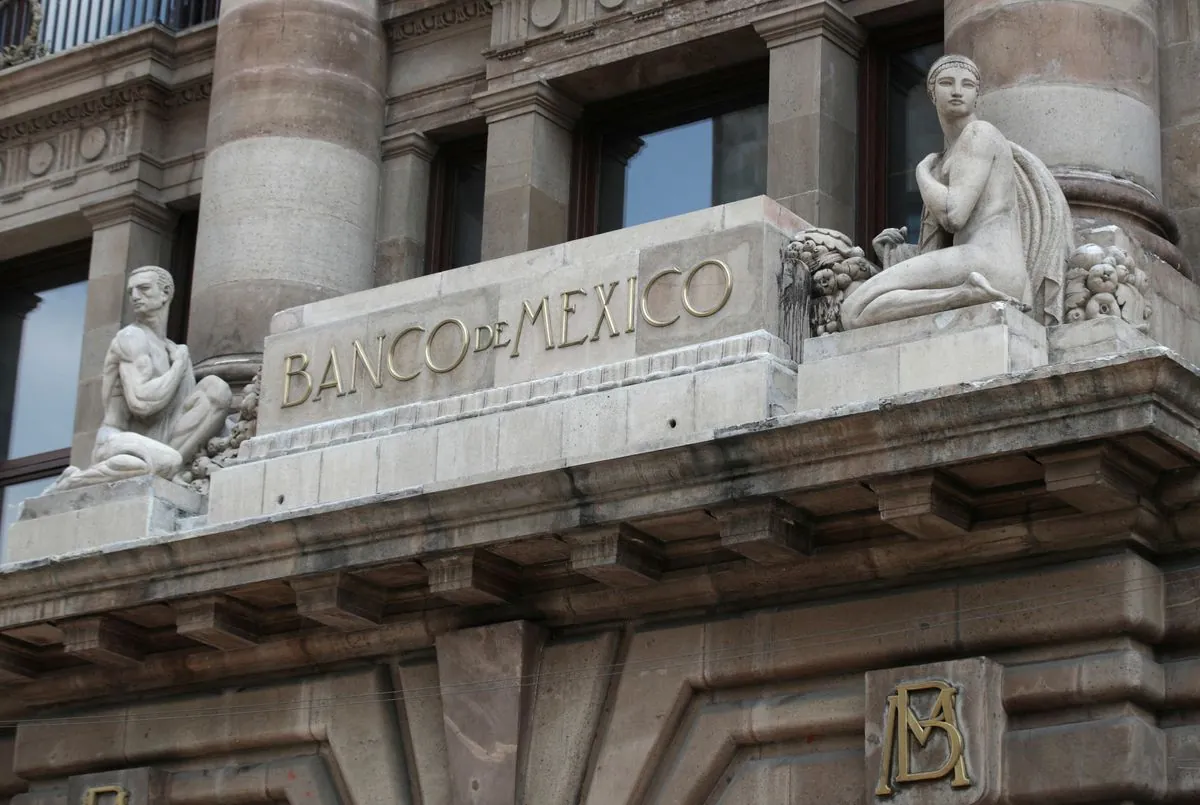Mexico's Inflation Hits 14-Month High, Complicating Rate Cut Prospects
Mexico's headline inflation rose to 5.57% in July 2024, reaching a 14-month high. While core inflation moderated, the surge may complicate the central bank's plans for potential interest rate cuts.

Mexico's economy, the 15th largest globally by nominal GDP, faced a significant challenge as annual headline inflation surged to 5.57% in July 2024. This increase, aligning with analysts' predictions, surpassed June's 4.98% figure and marked the highest level since May 2023.
The inflation spike is likely to complicate potential efforts by the Bank of Mexico (Banxico), the country's central bank established in 1925, to reduce its benchmark interest rate. This development comes at a crucial time for Mexico's economy, which has been navigating various challenges since joining NAFTA (now USMCA) in 1994.
While headline inflation rose, the core inflation index, which excludes volatile food and energy prices, showed signs of moderation. In the 12 months through July, core inflation decreased to 4.05%, down from 4.13% in June. This metric is often considered a more reliable indicator of price trends.

At the end of June 2024, Banxico decided to maintain steady interest rates. This decision followed a rate cut in March 2024, which was the first reduction since the bank began its restrictive cycle in mid-2021. The central bank had previously indicated that slowing inflation could pave the way for further cuts.
Mexico's economic landscape is complex, with the services sector accounting for about 60% of its GDP. As the world's largest producer of silver and a major oil exporter, the country's economy is diverse but heavily dependent on the United States, its largest trading partner.
The Mexican peso, one of the 15 most traded currencies globally, may face pressure due to this inflationary trend. This situation is particularly significant given that Mexico has 13 free trade agreements with over 50 countries, highlighting its integration into the global economy.
As policymakers navigate these challenges, they must consider various factors, including remittances from Mexican workers abroad, which constitute a significant source of foreign income. The country's status as the 10th most populous globally and its rich cultural heritage, boasting the largest number of UNESCO World Heritage Sites in the Americas, add layers to the economic considerations.
The current inflationary pressures echo past economic challenges, such as the 1994 "Tequila Crisis," reminding observers of the resilience required in managing a free market economy in the trillion-dollar class. As Mexico continues to balance its role as a major economic player with internal economic stability, the coming months will be crucial in determining the trajectory of its monetary policy.


































